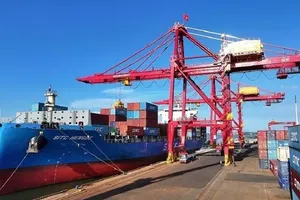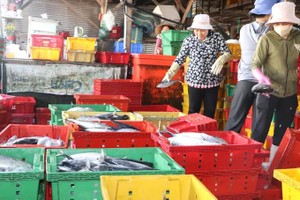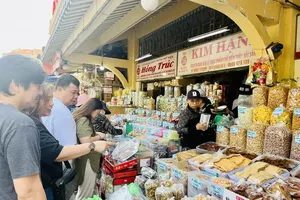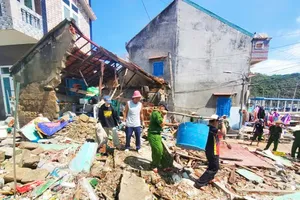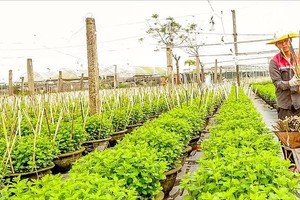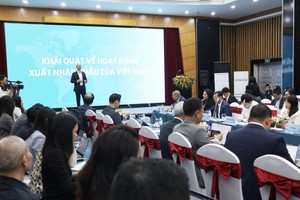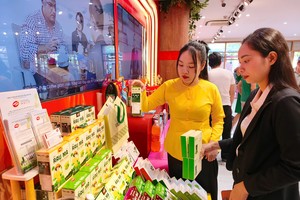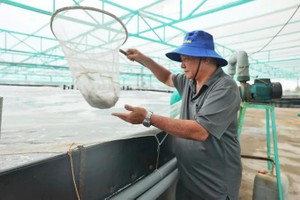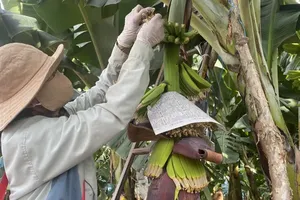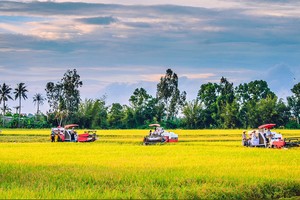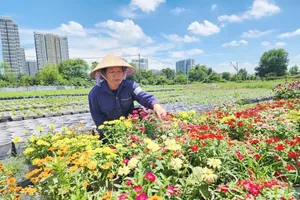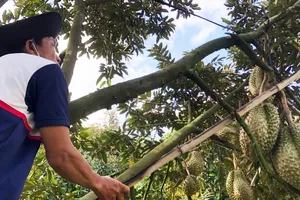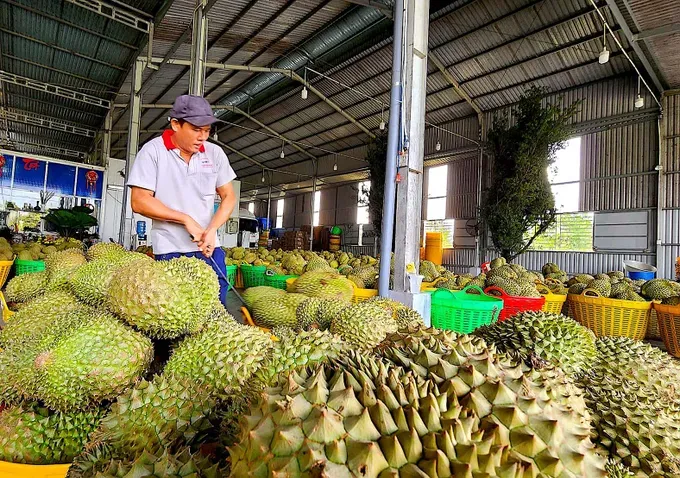
Data from the Ministry of Agriculture and Environment paints a stark picture for durian growing. In the first four months of 2025, durian exports to China suffered a severe downturn, reaching only approximately US$120-130 million with an estimated export volume of 35,000 tonnes, representing a mere 20 percent of the initial plan. This contrasts sharply with the same period in 2024, when exports surpassed 50,000 tonnes and generated over $500 million.
Authorities assessing the returned durian consignments have determined the primary cause to be the detection of two banned substances, namely Yellow O and cadmium. Durian export businesses report that Yellow O is a substance reportedly employed by some to dip the fruit, creating an appealing yellow hue as a substitute for turmeric powder. While this process is faster and reduces costs, it poses a significant health hazard to humans.
Cadmium contamination presents a more intricate problem. According to Assoc Prof Nguyen Duy Thinh, a food science specialist and former lecturer at Ha Noi University of Science and Technology, cadmium (Cd) is a hazardous heavy metal. Controlling cadmium in durian and other fruit trees necessitates farmers adhering to sustainable farming practices, strictly avoiding the excessive use of fertilizers and pesticides. He stresses the importance of not delaying cadmium testing until post-harvest. Despite ongoing efforts, Assoc Prof Nguyen Duy Thinh stated, “The precise origin of cadmium residue in durian fruit remains undetermined to date.”
On the ground, durian growers themselves confess to being largely in the dark regarding the presence of cadmium residue on their fruit. Le Kim Kha, a durian farmer in Tien Giang Province, speculates it might stem from the heavy application of phosphorus fertilizers during root treatment, but the efficacy of current cautious practices is uncertain.
From a regulatory standpoint, Director Luu Van Phi of the Tien Giang Province Department of Industry and Trade suggests off-season cultivation leads to fertilizer/pesticide abuse and accumulation, potentially worsened by fake inputs. Both views highlight the complexity; Director Phi confirmed no official data definitively pinpoints the contamination source – whether it originates from soil, water, or agricultural inputs.
Thailand’s durian exports to China, which also previously encountered inspection challenges related to cadmium and Yellow O levels similar to Vietnam’s fruit, are currently experiencing smooth passage. Thai media reports indicate that China’s General Administration of Customs recently decided to boost personnel and implement 24/7 durian inspection, a move hailed as a “greenlight” for Thai durian.
General Secretary Dang Phuc Nguyen of the Vietnam Fruit and Vegetable Association shared that, despite a temporary suspension of durian exports, Thailand swiftly finalized its self-inspection protocols in a short time. This was possible, he noted, because Thailand’s Ministry of Agriculture and Cooperatives acted as the central liaison, safeguarding the interests of and providing support to businesses.
“I have called for the urgent implementation of specific tasks, including drafting and promulgating a detailed Circular outlining procedures for issuing codes for cultivation areas and packing facilities, establishing a quality and food safety monitoring program tailored specifically for export-bound durian, and thoroughly preparing documentation and agendas to engage with Chinese authorities during the ministry’s forthcoming visit, aiming to broaden the scope of bilateral cooperation in agriculture and environmental sectors.”
Minister of Agriculture and Environment Do Duc Duy
(Addressing a conference on May 8 dedicated to resolving challenges for the durian export industry)
Chairman Vo Tan Loi of the Tien Giang Province Durian Association pointed out that a primary reason for Vietnam’s stagnant durian exports to China is farmer reluctance to test fruit for cadmium before selling. Businesses offered premium prices if tests were negative, but growers feared rejection and market issues if positive results leaked.
Another significant obstacle is delayed regulatory action on testing. The Tien Giang Province Durian Association proposed publicizing testing costs for cadmium and Yellow O from accredited centers, citing unreasonably high negotiated fees. They also urged investment in a local testing center in Tien Giang Province for easier durian appraisal and certification.
The Provincial People’s Committee remains unresponsive. A provincial leader explained current challenges, including significant investment, limited business capital, and intricate Vietnamese-Chinese licensing approval required for such centers.
According to Depuy Director General Nguyen Quang Hieu of the Department of Crop Production and Plant Protection (Ministry of Agriculture and Environment), Vietnam currently has 15 laboratories capable of testing for cadmium and 9 for Yellow O, situated in major cities, but notably none in the Central Highlands or Southeast regions.
All existing Yellow O testing labs have received accreditation from Chinese authorities. Establishing international standard laboratories demands substantial capital, requires highly trained experts, and involves complex Vietnam-China approval procedures, posing significant challenges to quickly addressing the testing gap in key growing regions.
As the Mekong Delta’s durian season ends, widely regarded as a failed season, the focus shifts to the Southeast and Central Highlands regions approaching their main season starting in August. This region spans approximately 45,000ha with a projected harvest exceeding 500,000 tonnes.
The unique August-November harvest in the Central Highlands region offers Vietnam a significant competitive edge, yet critically, provinces there presently lack essential facilities equipped to test for cadmium and Yellow O. This leaves cooperatives like the one in Dak Lak Province confused, facing potential export hurdles.
Alternatives like freezing or selling locally via trade promotion centers in the provinces of Cao Bang, Lang Son, Da Nang are limited, meaning consumption volume and prices are unlikely to meet expectations.
